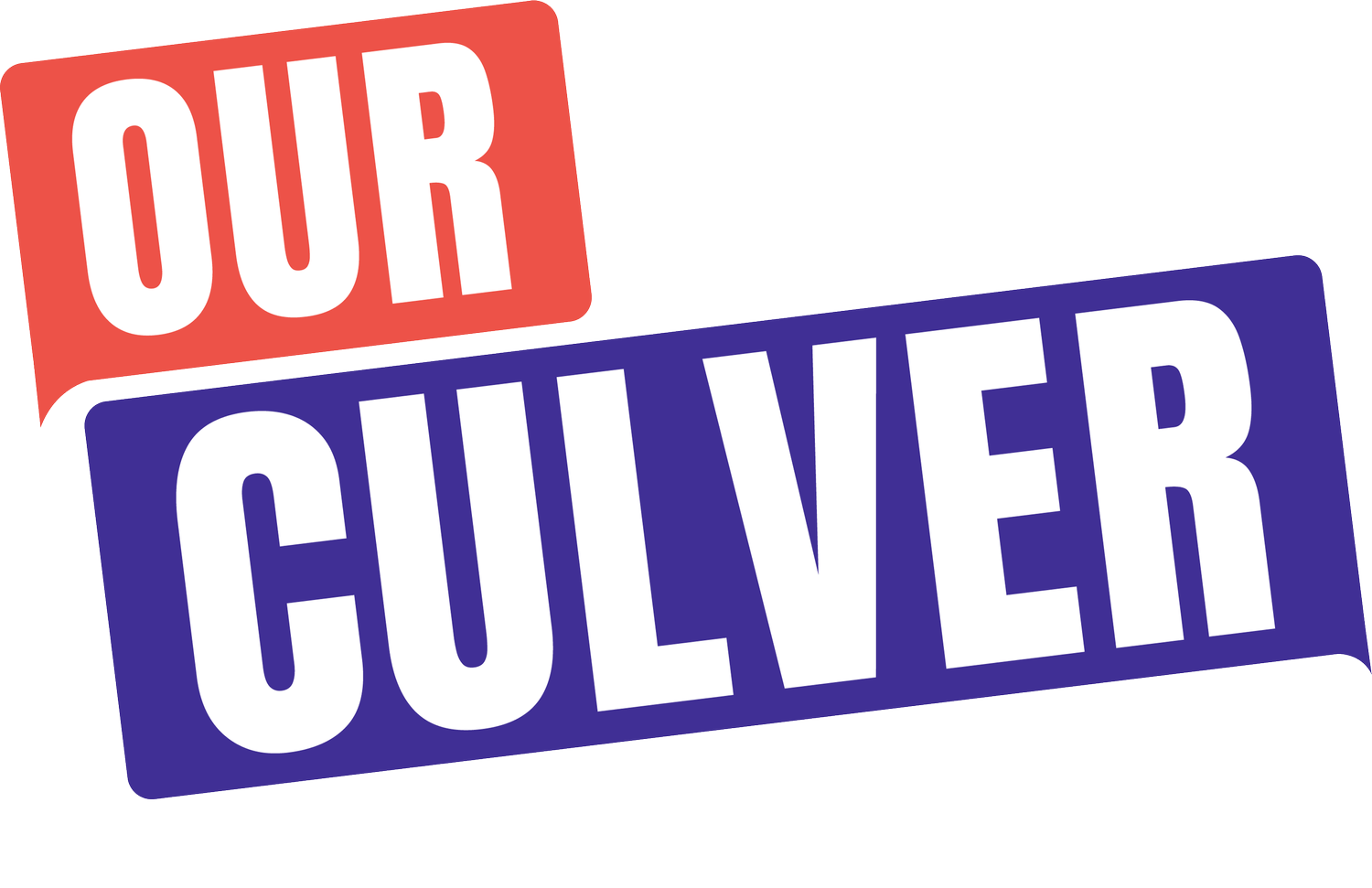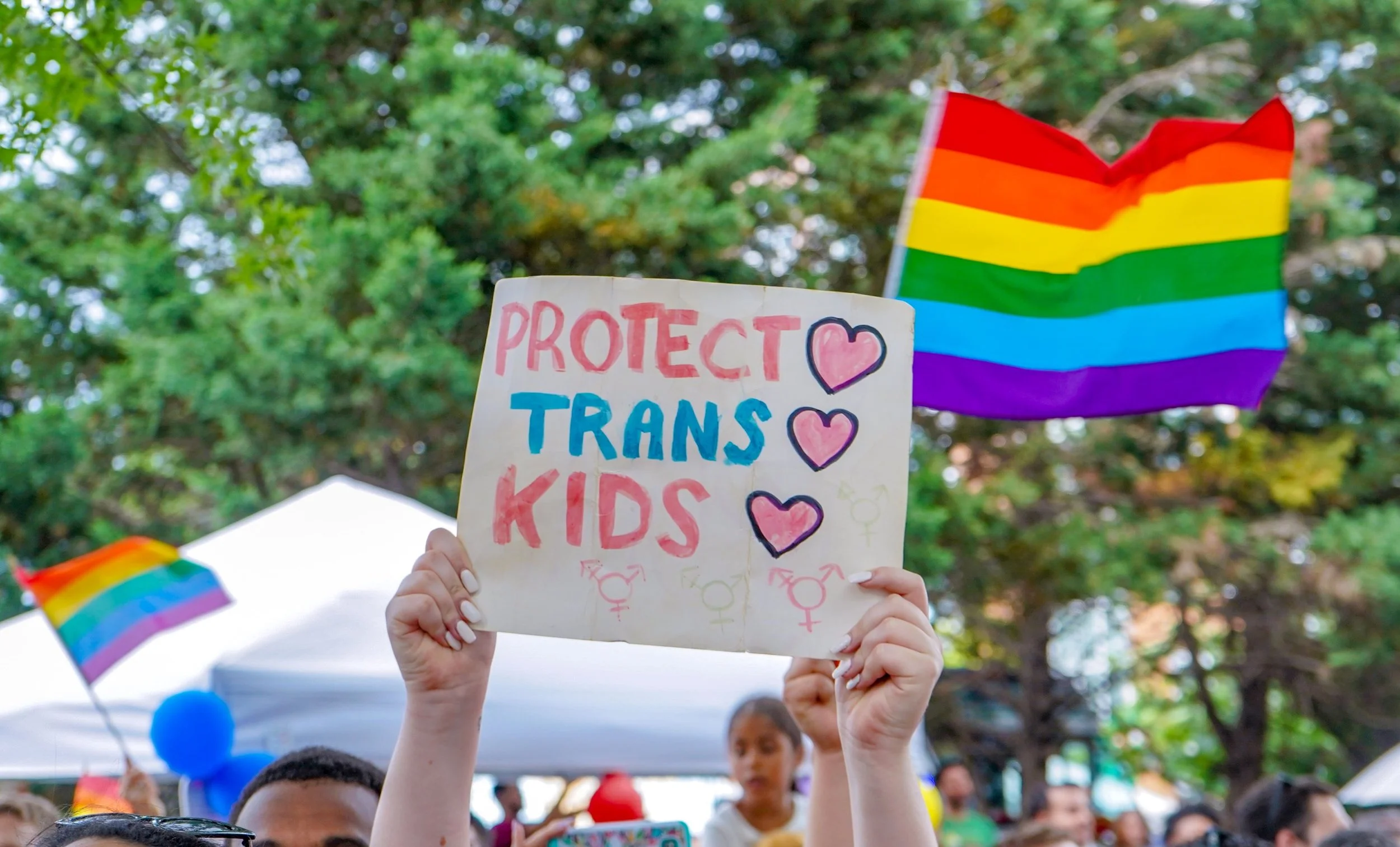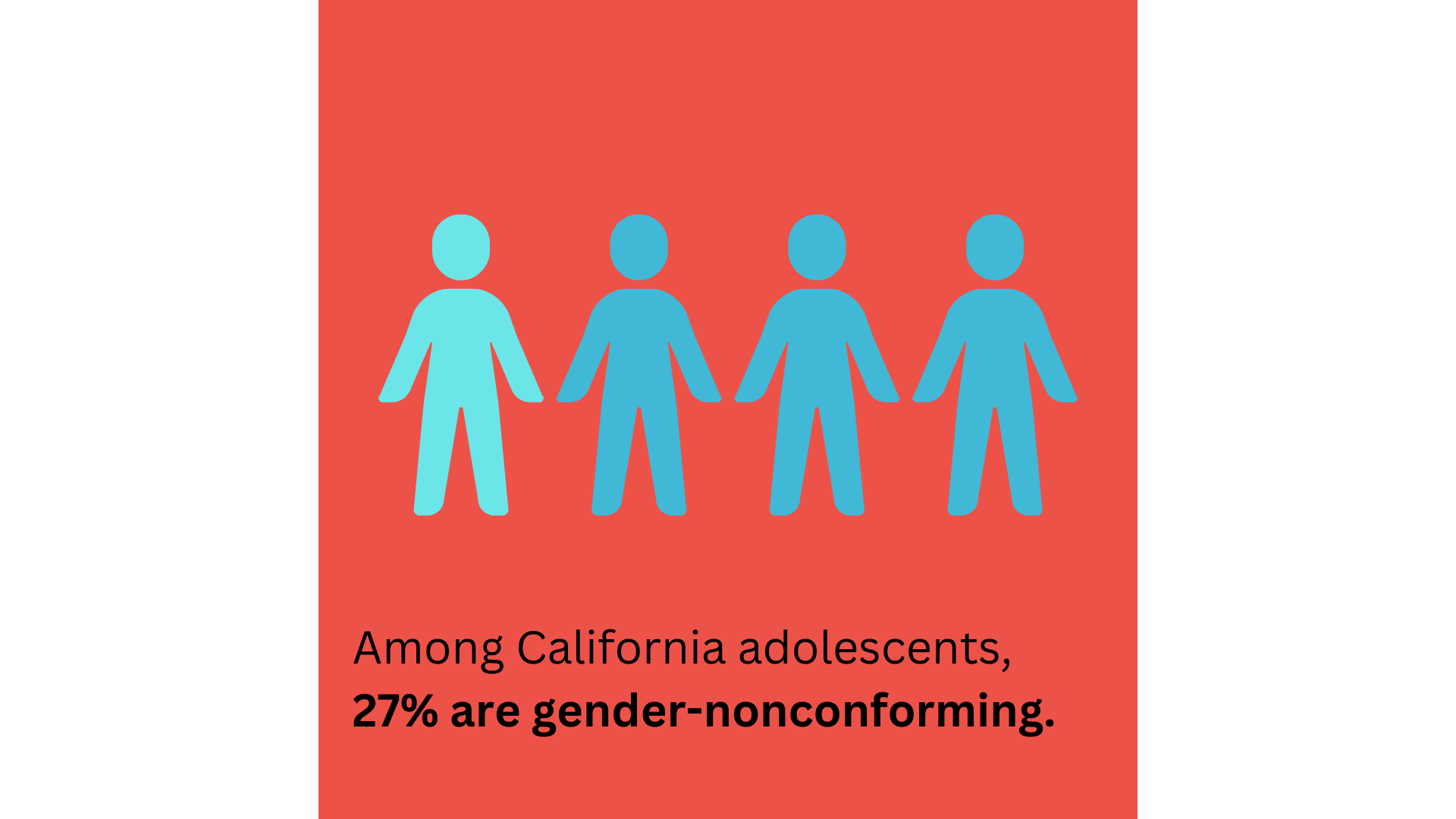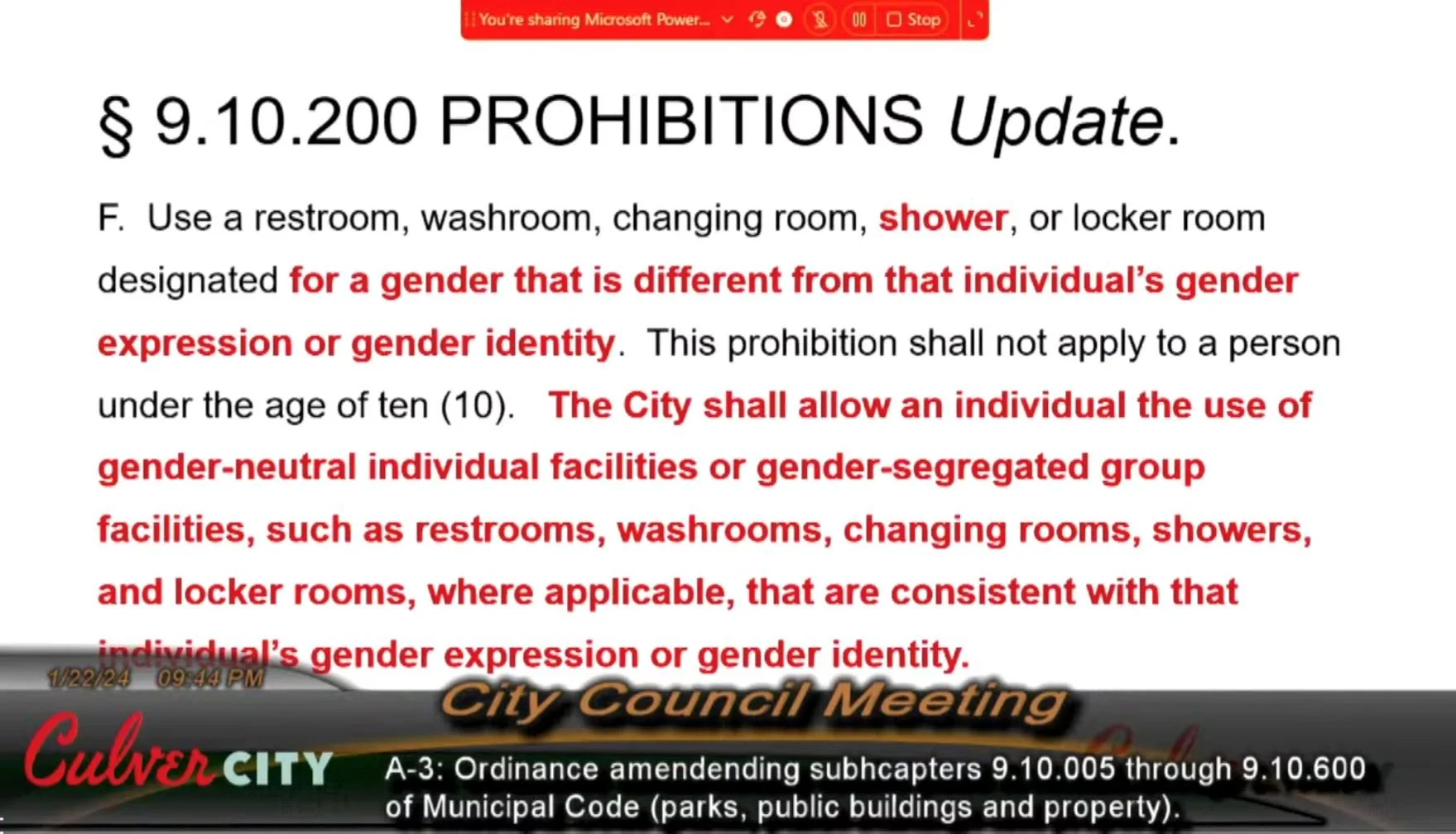An anti-trans bathroom bill in Culver City?
UPDATE: Since this article was published, the Equity and Human Relations Advisory Committee has proposed new language, and the City Council is set to consider the new language at its Monday, March 7 meeting.
Culver City has long had a prohibition on anyone over 10 years old using a public restroom “designated for the opposite sex.” This is precisely the language that is used to target trans people in bathroom bills that are being passed in red states like Florida.
On January 22, 2024, the Culver City Council reviewed proposals for more inclusive language. At the meeting, the City Council asked the City’s Equity and Human Relations Advisory Committee (EHRAC) to review the issue at EHRAC’s February 27, 2024 meeting.
What’s the big deal?
Using a public restroom may be one of the most vulnerable acts we do in a public place. As a result, feeling safe and comfortable in public restrooms is a primary concern for just about everyone. And this desire for safety and comfort is what animates some who want sex- or gender-based prohibitions on restroom use.
But such prohibitions actually threaten the safety of trans, nonbinary, and gender-nonconforming people, and that’s why the prohibitions are so harmful.
These prohibitions harm kids and young adults
Recent surveys have found that 27% of California adolescents say they are viewed as gender-nonconforming, and 1 in 20 people aged 18-29 identify as trans or nonbinary. Trans people are also disproportionately young, with 1 in 5 people who identify as trans falling in the 13-17 age group. And Black and Latinx youth are more likely to identify as trans than white youth are.
Even the revised language proposed at the Culver City Council meeting makes using public restrooms more dangerous for all these kids. The revised language prohibits using a restroom designated “different from that individual’s gender expression or gender identity.”
First, this language outright prohibits nonbinary kids from using public restrooms. Many nonbinary kids don’t identify as a boy or a girl, so both the men’s room and the women’s room are “different from that individual’s gender expression or gender identity.”
And neither restroom might feel safe at all for a nonbinary kid. Just a few weeks ago, a nonbinary teenager in Oklahoma died after being beaten in their high school restroom.
Second, bathroom choice would be prohibited under the revised language. For many trans kids, depending on the situation, how they are presenting, and how they might be perceived by other people, they might choose one bathroom over the other as being the safest, most comfortable option.
A trans boy, for example, (e.g., a teen who was assigned “female” at birth but who is a boy, uses “he/him” pronouns, dresses as a boy, etc.) might feel safer using the women’s room in a situation where he feels he might be perceived as trans and feels threatened by men who are present.
Ideally, a trans boy would feel safe enough to use the restroom consistent with his gender identity — the men’s room. Unfortunately, that’s not always the case, and that’s why bathroom choice is so important. But under the revised language this trans boy would be forced to use the men’s restroom because it would be the only restroom consistent with his gender identity.
In other words, an inadequate attempt at more inclusive language may end up causing more harm to trans and nonbinary kids. Including trans and nonbinary voices in the drafting process could help avoid these kinds of mistakes.
These prohibitions even hurt kids who aren’t trans or nonbinary
The harm from the city’s revised language will be broad, even affecting kids who aren’t trans or nonbinary. For example, consider an 11 year old girl who isn’t trans or nonbinary, but she decided to wear her brother’s clothes to the park. If she uses the women’s restroom is she breaking the law because the women’s room isn’t consistent with her gender expression when she’s wearing boy clothes?
Imagine if someone complained to a Culver City Parks official. That Parks official is now charged with applying the prohibition to this situation. Consider their thought process:
Okay, is this kid a boy or a girl?
At birth were they assigned male or female?
They're dressed in boy's clothes but maybe that's not unusual for a girl. I'd feel differently if it was a boy dressed in girl’s clothes. Is that discriminatory?
Do boy clothes mean their gender expression is boy?
If so, they can’t use the women’s room, so they’re violating this law.
Why are we asking Culver City officials to address such boundary-crossing questions? Let’s just let people use the restroom where they feel safe and comfortable.
Cut the prohibition. Leave the affirming language.
The city’s revised language actually has some great affirming language, gesturing towards a broader understanding of gender identity and expression. But it also broadly prohibits folks from choosing which bathroom is most comfortable.
The solution is simple:
Cut the prohibition. Remove § 9.10.200(F) in its entirety from the proposed ordinance.
Leave the affirming language. Add a new section that doesn’t include a prohibition. Here’s what we propose, modeled after regulations passed by the Washington State Human Rights Commission:
§ 9.10.205 GENDER-SEGREGATED FACILITIES.
In public buildings or on public property:
A. The City shall not request or require an individual to use a gender-segregated facility that is inconsistent with that individual's gender expression or gender identity, or request or require an individual to use a separate or gender-neutral facility.
B. If another person expresses concern or discomfort about a person's gender expression or gender identity, the person expressing discomfort should be directed to a separate or gender-neutral facility, if available.
C. Whenever feasible, the City shall provide options for privacy, such as single-use gender-neutral bathrooms or private changing areas, that are available to any individual desiring privacy.
D. The same standards of conduct and behavior must be consistently applied to all facility users, regardless of gender expression or gender identity.
There's no perfect solution, but by listening to trans and nonbinary folks we can start to understand how best to reduce the harm caused by these outdated and discriminatory laws.
Add your voice to the conversation. Send your stories to ourculver@gmail.com.








